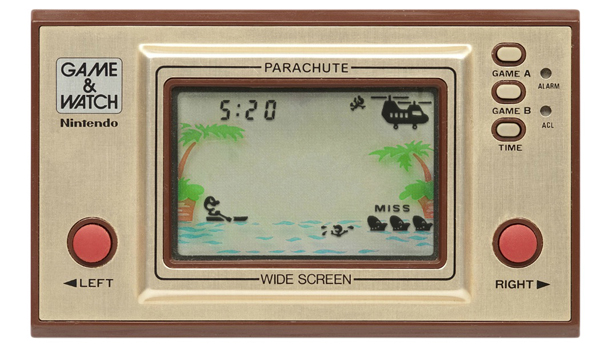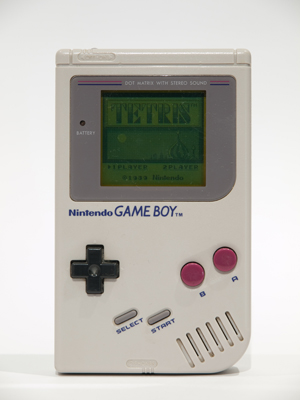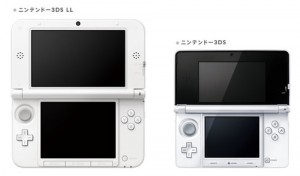Ever wondered why there are so many kids (and big kids!) with their heads stuck in a game console as you walk around or take the train in Tokyo?
Gaming is part a of Japanese culture so engrained in modern life that we can hardly imagine a time without the LCD screens that suck away our time and, for some, make that commute bearable.
There is one name in Japanese gaming technology that, from wherever in the world you come, sticks out. Jeff Sear investigates the power of Nintendo, hand-held style.
Nintendo has been a worldwide household name for decades. With the advent of video games and Nintendo’s immensely popular Nintendo Entertainment System (called Famicom in Japan) released in the mid-80s, Nintendo has grown to become a gaming entertainment powerhouse, pushing 80 billion yen in yearly net income and employing over 4,500 people worldwide.
It is well known even to people that don’t play video games or, for that matter, know anything about them. If you point at a Sony Playstation and ask a 60-something year old retiree what it is, there is a good chance that they will call it “a Nintendo.” In fact, it is much like how the general term for an mp3 player for most people is “iPod”, regardless of the make or model of the actual mp3 player.
Nintendo is synonymous with video games but the company actually started as a western-style playing card manufacturer. Fusajiro Yamauchi founded the company in Kyoto in 1889, aiming primarily to export their playing cards to western markets. Much to Yamauchi’s surprise, the cards became popular to the Japanese, and the story began.
While focusing on bringing video games into the living room of millions worldwide, right now there is nothing quite as popular and Nintendo’s portable, handheld gaming systems. The original Game Boy, released in 1989, became the benchmark in portable gaming as it went on to sell 120 million units worldwide throughout it’s lifetime.
Many video game companies have tried to enter the portable gaming market, such as Sega with it’s Game Gear system, but none have been able to match the sheer charm and accessibility of Nintendo’s handheld systems. Sega entered the game promising more than they could offer. They tried to provide a superior gaming experience, but without the 3rd party support and with a system that ate AA batteries like no other it just didn’t take off.
Sony, which produces the popular Sony Playstation Portable (PSP), has come closest to touching Nintendo’s hand-held success in recent years but one thing has remain constant: Nintendo has been and continues to be the leader in portable gaming and there seems to be no end in sight.
After the Game Boy came Nintendo’s long-awaited Game Boy Advance (GBA) in 2001, which brought portable gaming to an entirely different level with a full-colour display and more compact design. Following a complete redesign of the GBA which focused on making the system more portable and giving it a backlit screen for easy playing in dark places, Nintendo released upon the world the revolutionary Nintendo DS in 2004.
The Nintendo DS provided a distinctive feature never seen before in gaming: it had two screens, one on the top and a touchscreen on the bottom which could be used with a stylus or finger. It brought with it entirely new ways for game developers to design and with it’s innovation, it lead Nintendo to dominate the video game market. Worldwide unit sales of over 150 million beat almost every other video game system ever released, handheld or otherwise, and is second only to Sony’s popular Playstation 2 home console system.
Nintendo, with the portable gaming market firmly secured, announced to the world that it would be releasing the next version of it’s handheld gaming series, the Nintendo 3DS in 2010. The design of the 3DS is much like that of the Nintendo DS, with a top and bottom screen, the bottom being a touch screen, and with the addition of an analog joystick seen on Sony’s PSP.
The gaming world was shocked when Nintendo announced that the top screen would be a stereoscopic 3D display, producing 3D effects much like what has been seen in movie theaters recently but without the need for 3D glasses. This announcement was followed by much criticism saying that the 3D was an unnecessary gimmick and that the system simply needed a graphical overhaul and improved processing power to compete with stronger gaming systems. When 3DS test units arrived on the scene, though, people were taken aback by the quality and immersion of the 3D screen. This could be a game-changer.
In February 2011, Nintendo released the 3DS to the Japanese market, quickly selling out units across the country. This was followed by release in Europe and North American later that year. Unfortunately for Nintendo, however, the excitement and novelty of the first consumer-level stereoscopic 3D device ever released wore off as the public noticed the lack of quality software produced for the system.
This led to worse than expected sales of the 3DS, which caused massive losses for Nintendo and prompted a significant price decrease for the system. This led to outrage from early adopters who had paid a premium for the system on release day but in turn opened up the market to reluctant customers who were intrigued by the lower price. To compensate early adoptors, aiming to quell any backlash, Nintendo introduced the Ambassador Program, a special privilege for people who had bought the 3DS before the price decrease.
The Ambassador Program provides a series of software, downloadable to the 3DS, which is not accessible to anyone who bought the system after the price decrease. These “Ambassador systems” are now sold on the aftermarket at a premium because of the exclusive access to these software titles and are coveted by loyal Nintendo fans.
The price decrease, followed by the release of quality first party software showcasing the most beloved Nintendo mascots such as Super Mario Land 3D, Kid Icarus, and Mario Kart 7, was exactly what Nintendo needed to bring the Nintendo 3DS back into the limelight. This transformed one of Nintendo’s worst system launches into one of its most successful system launches ever, with first-year sales of the 3DS beating those of the Nintendo DS, with roughly 18 million units sold in a little over a year.
The 3DS is especially popular in Japan and is ahead of the competing Sony Vita handheld system, which has seen lackluster interest from the Japanese public. The Sony Vita seems to be suffering from what Sega suffered from with it’s Game Gear system back in the 1990s. The Vita is a system that seems to be simply offering too much instead of focusing on specifics. It is equipped with a CPU that rivals home-based console systems, a touchscreen much like the iPhone, a tactical-feedback induced back panel, 3G internet, dual analog control sticks and proprietary Sony memory cards to save online content to.
Sony has condensed as much as possible into the Vita instead of focusing their efforts on putting together a truly concise product. It is speculated that the 3DS’s simple, more cohesive design and features, combined with social gaming aspects that focus on local multiplayer rather than networked, over-the-Internet multiplayer, are the main reasons why the 3DS is so successful in Japan.
In my experience as an owner of both systems, the 3DS offers a more cohesive experience while on the go. In a society where most people are on the move, either on the streets or on the trains, the local multiplayer and social functions of the system are easier to take advantage of. That, combined with quality first party software that Nintendo has been known to produce, draws the Japanese gaming audience to the system.
The branding, the characters, and history of Nintendo is quintessentially Japanese and its dedicated cast of never-changing company mascots and ruthlessly strict design and development practices really stand out. And with Nintendo’s softer, more refined and easily accessible hardware and software, the 3DS a driving force in the Japanese video game market.
With a plethora of games in the 3DS development pipeline and the newly released, larger and more sleek Nintendo 3DS LL coming in late July, the dominance of the 3DS has no end in sight.
The LL offers a larger screen and a smoother design, but offers nothing of significance beyond that. The 3DS LL does, though, open the market up for people that are hesitant to play on smaller screens – the 3DS was even marketed at an older generation who might want to take advantage of software such as Brain Training.
It is an exciting time in video game history and Nintendo has proven that it has what it takes to capture the entertainment industry with it’s dedication to fun and innovation.












